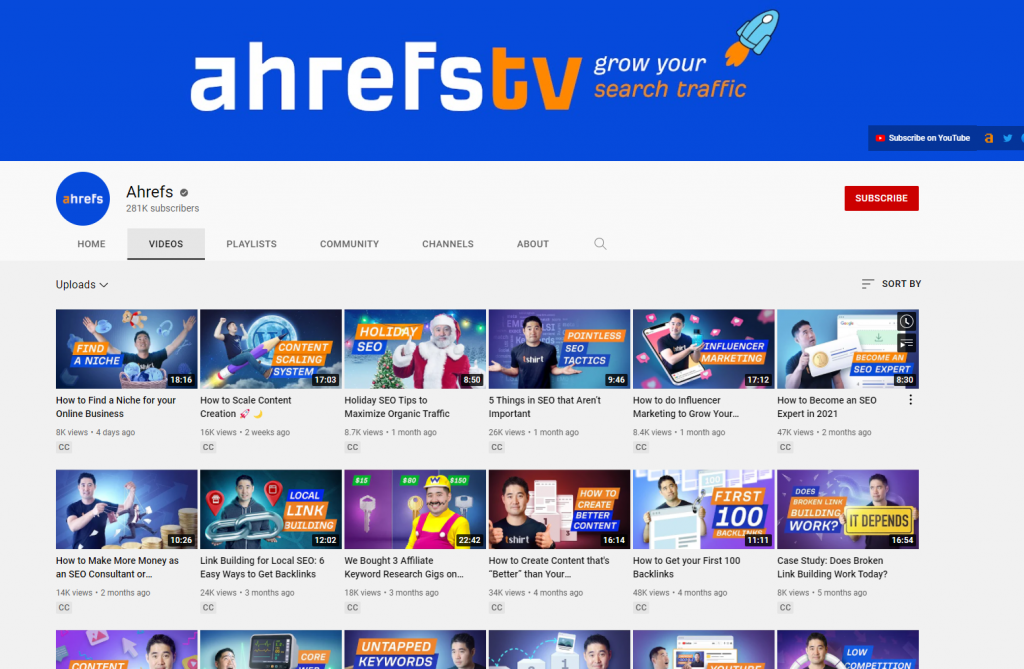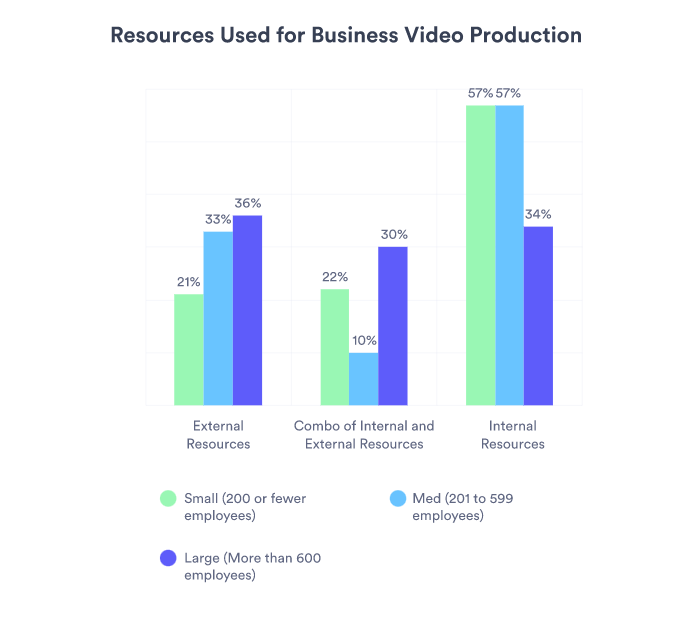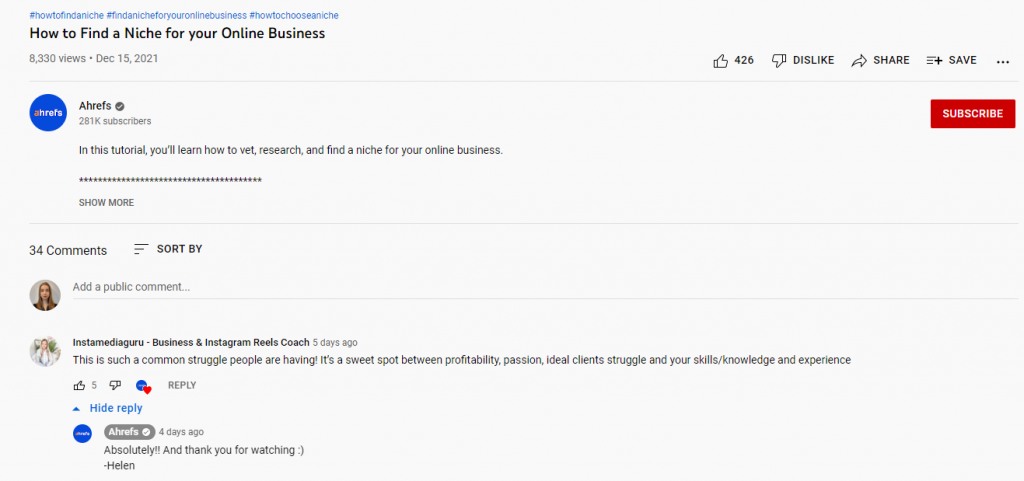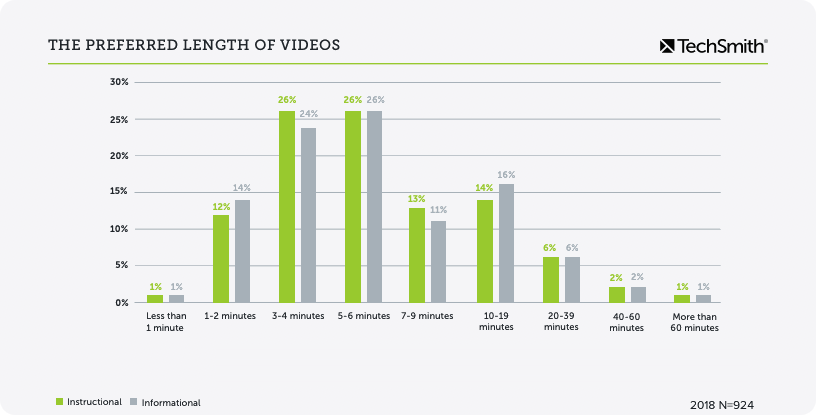B2B Video Marketing Guide for 2022 (with Tips & Examples)
So, imagine you’re searching for information on how to assemble a telescope. Your search engine shows a video and an article. Which one will you choose?
We bet you’ll go for a vid. First of all, it is a visual step-by-step guide, meaning the whole process will be clearer. Apart from that, you can watch and put your telescope together simultaneously.
From this example alone, it’s understandable why a company would invest in video marketing. But what about B2B businesses? Is building a video strategy different for them?
Keep reading to find out.
What is B2B Video Marketing?
B2B video marketing is a part of a content marketing strategy that involves outlining, creating, and distributing video content among your target B2B audience.
In most cases, SaaS and other B2B companies use this strategy to educate the audience while seamlessly promoting their product or service. The goal is to share as much information with target personas as possible in an engaging way.
If you’re looking for an example of successful use of visual content, consider Ahrefs. Its YouTube channel is stuffed with different SEO tips, ranking hacks, and other digital marketing insights. The channel is also very consistent – a new video comes out every two weeks (and the content is also very informative):

There is a misconception that B2B video ideas can be rather limited, but it’s not true. You can educate existing customers and prospects in a variety of ways. Here are a few types of video your strategy can include:
- Explainers or how-to videos
- Product demos
- Tutorials
- Case studies
- Event coverage
- Interviews with experts or influencers
- BTS (behind-the-scenes) content
- Customer testimonials
- Webinars
- Podcasts
In other words, you can get as creative with your content as you want. The key goal is to address the right need and show how it can be solved (using your product).
Why is Video Marketing Important? According to Stats
You might be thinking – is it really necessary to include videos in your content strategy? After all, they are notoriously pricey and require a lot of effort.
Indeed, depending on the kind of video you’re shooting, it can come out quite costly. However, you can’t neglect them altogether – according to Lemonlight’s original research, 76% of marketers have been investing in videos over the past three years.
Why?
The same study has shown that visuals significantly impact purchase decisions on any sales funnel stage – 94% of B2B buyers confirmed this statement. Apart from that, most consumers simply enjoy watching YouTube channels from their favorite brands – they find the content there very entertaining and educational.
What are other reasons to use videos in your B2B marketing strategy?
Take a look at what some other sources have to say:
- Your investment in videos will pay off. According to Wyzowl’s study, 86% of brands say this content has dramatically increased traffic to their websites and landing pages. Besides, 78% say videos brought more sales.
- A short video delivers more engagement. The duration of a vid matters: Wistia reports that it should be no longer than 3 minutes to deliver better results.
- Your business can get more booked meetings. Vidyard’s case study involving HubSpot has shown that investing in videos results in a 4x increase in product meetings with decision-makers.
- A live video opens access to younger audiences. If you want to reach more potential customers of the younger demographic, invest in streams – according to Unscreen, Gen Z and Millennials spend more time watching live content.
- Video ads drive more conversions. 80% of people can recall seeing such an advertisement in the past 30 days.
So, yes, investing in this content marketing strategy definitely has its perks. However, there’s still the question of price. Is it too expensive to make videos in-house, and does it make sense to outsource them altogether?
According to Vidyard’s report, most companies use their internal resources to execute this marketing strategy. Some combine their in-house efforts with external resources, and only a few outsource B2B content to agencies:

If you have the budget, then outsourcing doesn’t sound like a bad idea. However, you need to remember that it can be difficult to control production processes when they happen outside your organization.
7 Examples of Successful B2B Videos
Now that we’ve figured out the perks of creating video content, let’s look at some examples.
In general, watching your competitors is a helpful approach, and content marketing is not an exception. It helps you recognize the needs of your viewers better and find the right vector for your content.
So, recognize these seven examples as a mere opportunity to learn and improve.
Example #1: Squarespace and how-to tutorials
We’ll start with the most common B2B video type – explainer videos that teach you how to use the product or service. Such content is incredibly popular among SaaS businesses – it allows them to showcase their solution in action and take the massive load off the customer support’s shoulders.
Squarespace has a great example of a how-to video. In the example below, it talks about creating background art for a website:
It illustrates the step-by-step process of selecting the background image, editing and animating it, and uploading the result. The whole video is a bit over 46 seconds, the perfect length to keep the viewer engaged.
Where can you find ideas for how-to tutorials?
First of all, go through the customer service queries and identify the common problems clients need help with. Another idea is to read online reviews – people often share their feedback about product features they find hard to operate.
Example #2: Asana and product updates
Product news videos are not as in-demand as tutorials, but they are still important to keep your clientele updated. Surely, you can send an email notifying your subscribers about the upcoming changes, but the engagement rate will not be the same.
Product update vids are usually not long – about one minute. They cover the main features customers should expect in future months. Asana’s has a great video about December product functionality updates we can use an example:
How to level up an update video to make sure it’s not boring?
Try to bet on visuals. Your viewers want to see your product in action, so show them how the new features work. Don’t give away too much, though – you can cover more details in how-to videos later.
Example #3: Hootsuite and FAQs
There are some queries people are looking for online more often than others. Otherwise, Google wouldn’t create a dedicated section in SERPs.
You can answer the most frequently asked questions in a variety of ways – through blogging, in a post on LinkedIn and other social media platforms, etc. But none of them will deliver as much engagement as a video will.
Besides, video content has a higher chance of getting on the first page of search results. For instance, Lemonlight says it gets organic traffic boosts of up to 250% when using online videos.
So, what does a good FAQ vid look like?
It’s short but informative. You can also add a setting that would help the viewer memorize the information better. Hootsuite, for instance, recorded their answer to a common social media marketing question on a beach:
Where can you find ideas for this type of video?
Indeed, you have some studying to do. First and foremost, search through the customer service inquiries – they may have some interesting insights.
It can also be very helpful to do some digging using inbound marketing tools, namely those that automate SEO and keyword research. Take SEMrush, for example. For the keyword social media, you can see questions that people search for:

You can crawl this data to find potential FAQ video ideas.
Example #4: Slack and building a community
B2B vids don’t always have to be about your product. You can also use them as an opportunity to build and expand a loyal community of followers. It is immensely important for customer retention and building your reputation and brand awareness in general.
A fantastic example of content involving the community is a brand video by Slack that tells a story of two customers – Nina and Alla:
Essentially, Slack brought together two colleagues, who had never met before, in Iceland. They spent some time traveling around the country and became great friends. This way, Slack highlighted the importance of offline communication, which has been lost in the wake of the pandemic.
To find ideas for your own testimonial videos, browse your social media profiles and read comments to understand what your followers are talking about. If your website has a forum, you may find some excellent ideas there as well.
Example #5: Sprout Social and employee videos
You can also invite your employees to participate in creating a video. Employee advocacy, in general, has a great impact on branding – content involving and shared by employees brings 8 times more engagement.
You can film a vid showing the behind-the-scenes footage of your team working on new product updates. It’s also a great idea to show how each individual employee contributes to your brand’s growth. Take a look at how Sprout Social is doing it:
There’s really nothing special about this video – it only features a customer success manager sharing their experience working for the company. However, this video is essential in showing Sprout Social’s clients, whom they can contact, and how their issues will be resolved. It’s crucial for a customer to know the faces behind the brand.
Example #6: SEMrush and case studies
It’s normal that people want to hear proof that your solution is working. Surely, you can write a lengthy case study for your blog or other marketing channels, but will it deliver the same engagement? Besides, it’s better for a customer to see real faces involved in a customer success story.
Take SEMrush, for example. The case study video below involving Arkadium, a prime game generator, shows how SEMrush’s tool helped the company drive organic traffic by 850%:
The narrator also shares six steps which led them to such results and briefly showcases how SEMrush’s product works.
You can also repurpose this video format as an online ad. For instance, SEMrush has repeatedly used the vid above as an advertisement on YouTube. Such content undoubtedly drives more clicks and conversions than images or text – it is more dynamic and shows how a specific problem can be solved using your product (such as increasing traffic in Arkadium’s case).
Example #7: Wix and humorous videos
Some people falsely believe that B2B videos need to be serious and product-oriented. However, no one can limit you in your creativity – if you have a great idea and think it will resonate with your viewers, go for it.
Consider Wix’s example – the video below is supper funny and engaging:
At the same time, it addresses a burning problem that other CMS platforms can be easily hacked, compromising your security. The video ends with the You Deserve Better call to action, encouraging more viewers to choose Wix over other solutions.
5 Tips to Create a Great B2B Video Marketing Strategy
So, we’ve established that your video strategy can be as versatile as you want it to be. You can pull off anything, from basic tutorial videos to humoresque skits, as long as it resonates with your target audience.
Now, what does it take to create a successful strategy from scratch?
We’ve already described the whole process in detail in our video marketing article, but here are a few more tips you can employ to enhance the video production process.
Tip #1: Define the goals and objectives of your video marketing campaign
There is no point in investing in any content strategy if you don’t know how it will serve your brand. One of the reasons why video marketing fails is the lack of direction (as confirmed by 44% of participants in the study by Ascend2).
So, it is absolutely vital to have a scrupulous marketing plan outlining the core marketing goals and objectives you want to achieve.
Which goals are we talking about?
Here are a few examples:
- Lead and demand generation
- More traffic
- Better customer education
- Increased brand awareness
- Higher engagement
- Improved revenue
When you have a clear goal, it is also easier to determine the objectives and KPIs. For instance, if you aim to improve lead generation, the KPIs and metrics you need to track include:
- Click-through rates
- Conversion rates
- Leads per channel
- Time to conversion
A proper plan is also essential in helping you determine your video marketing budget. Otherwise, it will gouge a hole in your total marketing expenses.
Tip #2: Entertain and educate
B2B brands whose videos we’ve mentioned in the previous chapter are all great at video marketing. However, there’s one thing they are guilty of – they focus too much on stuffing videos with information, which can seem a bit impersonal and distant.
Although educating is one of the primary goals in B2B video marketing, try not to take on the role of a college professor too much. Remember – your content should also be highly entertaining.
Take ClickUp, a CRM and project management platform. Their YouTube channel consists mainly of educational videos, but there are a few humorous pieces like this one below:
Apart from simply entertaining the viewer, it also addresses a common pain point most people have before the new year – to finish all work-related projects asap. And engaging videos like this definitely help ClickUp stand out and outshine other prominent competitors like Jira, Monday, Asana, and Trello.
Tip #3: Keep it short and sweet
We’ve already mentioned Wistia’s study showing that the optimal video length should not exceed 3 minutes. The longer the video is, the less engagement it brings.
TechSmith’s research reveals similar results – instructional and informational vids should be no longer than 5-6 minutes:
As for the tone of the video, try to keep it warm and inviting. Do not try to play down the customer’s need that’s being addressed. Instead, validate their pain points and show how your product can help.
Tip #4: Stand out from the crowd (aka show how you’re different)
It can be quite a challenge to find an engaging idea for a video. After all, whatever message you want to deliver, it has probably already been said by a rival of yours. So, the chances of your content being unique are pretty low.
However, you can still come up with an outstanding way of presenting the message, which will help you stand out from the crowd. Here are a few ways on how to find the right direction:
- Watch others. See what your competitors are up to, analyze the pros and cons of their strategy, and use these insights to optimize your video marketing campaign.
- Look at your past content. How did it perform? What did people like and dislike about it? Assess viewer behavior to understand what your videos lacked and how you can improve them.
- Stay true to your values. We know it sounds cheesy, but don’t try to be someone else – customers have a good memory, so they won’t appreciate a copycat.
If you find it hard to pick the vector for your videos, join efforts with other teams (e.g., your sales department). Their comments can be very insightful, helping you uncover your brand’s unique voice.
Tip #5: Get feedback on your B2B video
The golden rule of content marketing reads like this: always be mindful of feedback your readers or viewers provide. It is a goldmine of opportunities to keep improving your company’s online presence.
Also, don’t forget to reply to comments under your videos. Ahrefs is doing it occasionally to keep the engagement high:

On top of that, people often share their pain points in the comments. So, if you read the comment section closely, it can supply you with tons of great business video ideas.
Now Over to You
Whether you already have or are only planning to create a video marketing strategy, it is essential to keep it consistent, as with other related activities. Consumers don’t see videos as something outstanding or one-of-a-kind; they expect this content to be present in their favorite brand’s marketing efforts.
So, start creating a video plan as soon as possible. Define a clear goal, KPIs, and objectives to understand what you want to achieve. Write a script to bring your ideas to life, involve employees to drive engagement, and don’t forget about tracking viewer feedback. This is the perfect formula for a successful B2B video marketing campaign.
Interested in more articles like this? Keep reading our blog – we have more similar content in store!

Mariia is a content strategist and editor at Digital Marketer’s World. She is passionate about educating others on all things marketing and believes in the power of the written word.

